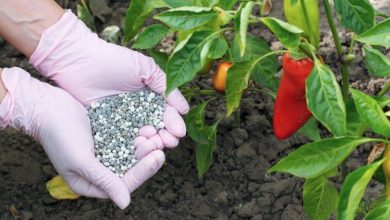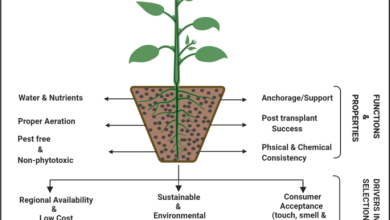Zucchini Diseases and Pests: Complete Guide with Photos
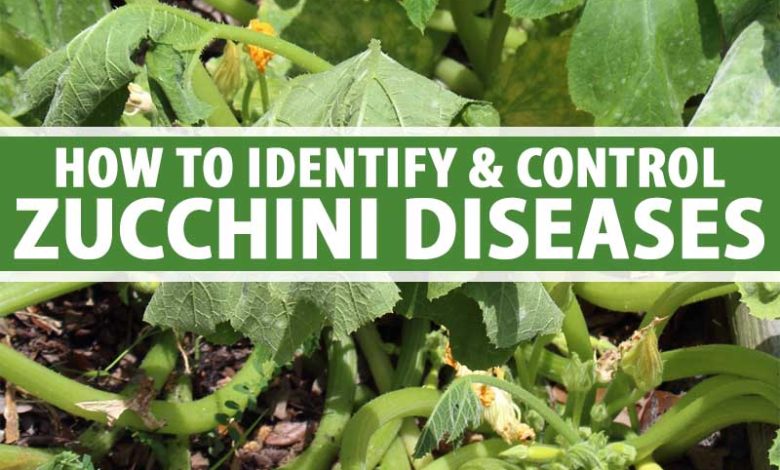
Today’s protagonist will be a cucurbit: the zucchini. Specifically, we will talk about the different zucchini pests and some diseases that can damage this crop.

Lucía has already given us some tips on how to grow organic zucchini in the garden. In that first post we saw the main requirements and care of the zucchini, and today we will focus more on the problems of the crop: the damage caused by the main pests and diseases of the zucchini in this crop.
Zucchini pests
1. Whitefly on zucchini
Whiteflies, despite their name, are not flies. They are generally located on the underside of the leaves.
What these small insects like the most is tomato, cabbage and cucurbits such as pumpkin, zucchini or cucumber. They like humidity and high temperatures, so they are a frequent pest in spring and summer (and very dangerous in greenhouses).
The main damages they cause to crops are:
- Extraction of sap from the plant.
- mechanical damage
- They produce molasses.
- Some species are disease vectors
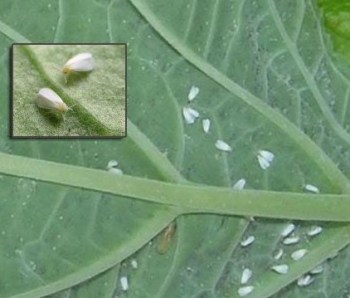
The best method of controlling these squash pests is prevention. Therefore, it is important that you check the underside of the leaves from time to time in order to act as soon as possible. In addition, there are various methods of whitefly control such as chromatic traps, natural predators, infusion of wormwood, garlic, etc.
2. Red spider on zucchini leaves
Although it is known as a spider mite, it is a species of mite. They are usually generalists and mainly affect vines, horticultural crops (zucchini, aubergine, etc.) or ornamental crops. They are located on the underside of the leaves and are identified by having dark spots on the sides and a large number of silks.
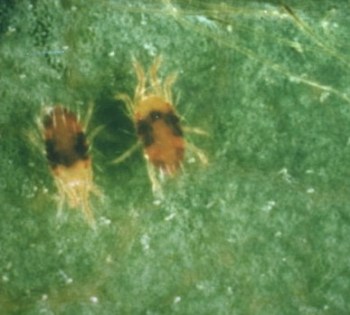
I leave you a link where we explain how to control the red spider.
3. Aphids in zucchini
Aphids are one of the most common pests in orchards and gardens. They are small in size (1-3 mm in length) and can have different colors depending on the species to which they belong. They attack the young shoots of crops with a high sugar content. The larvae cause damage by making galleries in the leaves of plants.
As for adult aphids, they feed by sucking sap from leaves, flower buds and young shoots using the stylet of their mouthparts. In addition, they excrete a sticky, sugary liquid called honeydew that attracts ants. They favor the appearance of a fungus known as bold and can also transmit viruses from one plant to another.
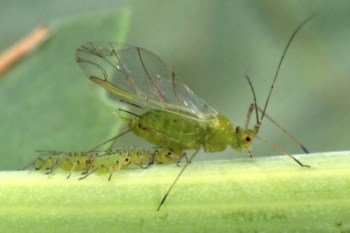
Some control methods are based on: Eliminating weeds, good substrate preparation, color traps, pruning or natural enemies such as ladybugs, lacewings, earwigs or wasps.
4. Bugs in zucchini flowers: Thrips
Thrips or Thysanoptera are an order of small insects. Their diet is almost exclusively vegetable and some 5,600 species are known. Its wings are very characteristic because they have a kind of fringe. Many species are pests (very damaging in greenhouses) and virus vectors. They measure between 1 – 6 mm, although the normal is 1 – 3 mm, cylindrical in shape, elongated and with a very sharp posterior end. They are yellow, brown or black with light and dark bands.
Adults colonize crops by laying within plant tissues in fruits, leaves and, preferably, flowers.
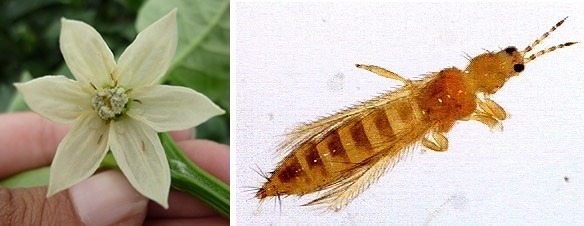
Control is based on:
- Placement of meshes in the greenhouse bands.
- Cleaning of weeds and crop debris.
- Placement of blue chromatic traps.
- Biological control with Amblyseius barkeri, Aeolothrips sp. and Orius spp.
Zucchini diseases
Zucchini is, in general, a species that is very susceptible to aerial fungal (fungal) diseases, highlighting powdery mildew, botrytis, fusarium, mildew and anthracnose.
White powder in zucchini
Hatred is a fungus, also known as pigweed, white mal or white mold. It appears in the form of white spots and gradually transforms into a grayish-white powder. Thanks to that dust, it is one of the easiest mushrooms to detect. It normally develops on the upper surface of the leaves, although it can also spread along the stem or the fruits. Their presence hinders photosynthesis. If we do not control it well, the leaves turn yellow and can dry out. Humidity and warm temperatures are the ideal conditions for powdery mildew to appear in our garden.
In the following link you can read how to eliminate the hatred of plants.
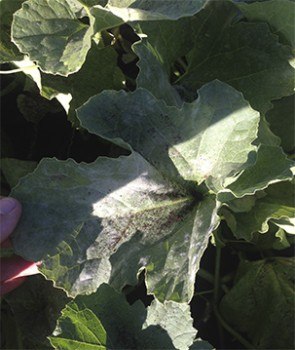
Rotten zucchini: Botrytis cinerea
This fungus causes gray rots and the plant tissue appears as if it is rotten. The most favorable conditions for its propagation are: high humidity, little ventilation and mild temperatures to propagate.
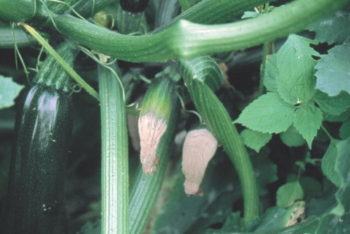
Zucchini yellow mosaic virus (ZYMV)
The main symptoms of viruses in horticultural plants are: vein discoloration, yellow leaves, bulging mosaic s, and sometimes plant stunting.
It is recommended to use healthy plant material, not abandon the crops at the end of the cycle, use resistant varieties, carry out crop rotations, certified seeds and, if the virus is detected, immediately uproot the affected plants.
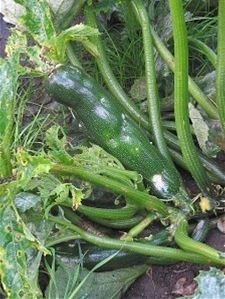
References
- Li J, Liu X, Yang X, Li Y, Dexian C (2018).Proteomic analysis of the impacts of powdery mildew on wheat grain. Food Chemistry, 261, 30-35.
- Bettiol, W., Silva, H., Reis, R. (2008). Effectiveness of whey against zucchini squash and cucumber powdery mildew. Scientia Horticulturae,117(1),82-84.
- Anthony P. Keinath, Virginia B. DuBose. (2012). Controlling powdery mildew on cucurbit rootstock seedlings in the greenhouse with fungicides and biofungicides. Crop Protection, 42, 338-344
What are the main problems with zucchini that you have encountered? Do you know other zucchini pests or diseases caused by fungi other than those we saw in today’s post? Tell us all about it in the comments!
Have a nice day!

![Photo of Crickets in the Garden: [Characteristics, Detection, Effects and Treatment]](https://www.complete-gardening.com/wp-content/uploads/2022/08/crickets-in-the-garden-characteristics-detection-effects-and-treatment-390x220.jpg)
![Photo of Prune a Lavender: [Dates, Tools and Ways to Do It]](https://www.complete-gardening.com/wp-content/uploads/2022/08/prune-a-lavender-dates-tools-and-ways-to-do-it-390x220.jpg)
